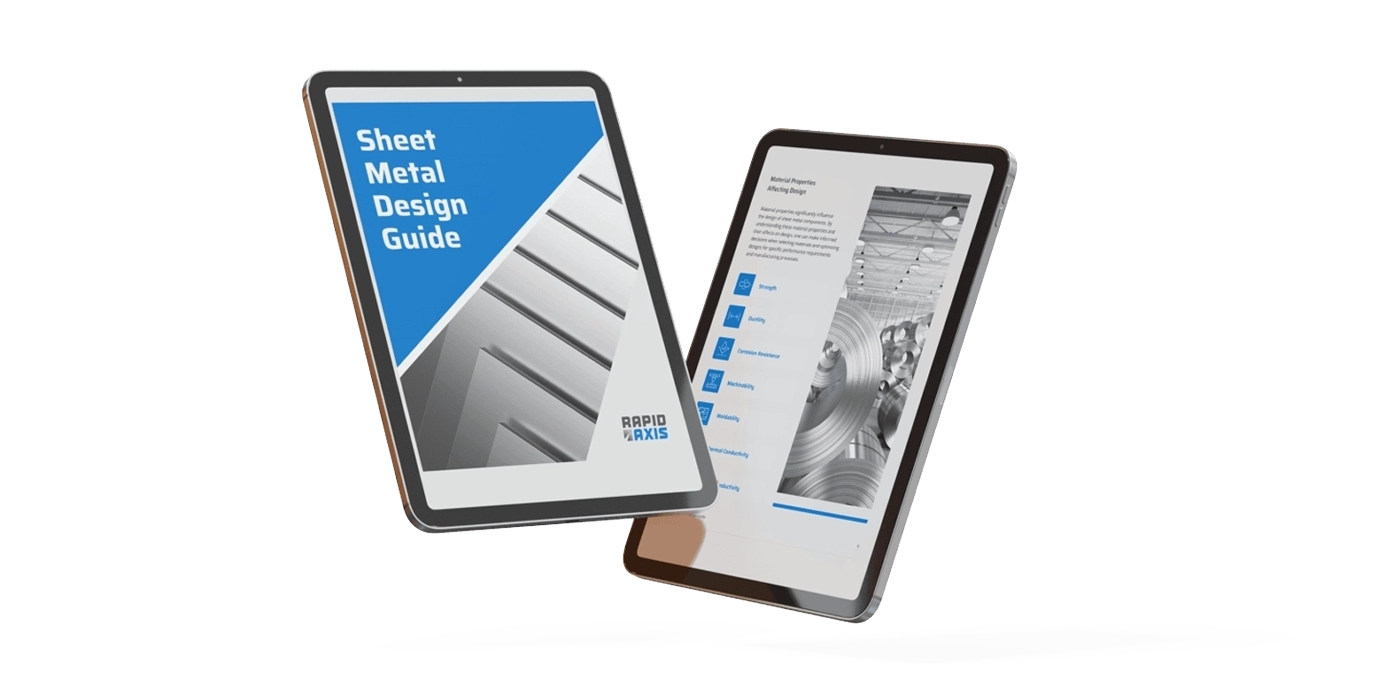Rapid Axis for Sheet Metal Fabrication
Rapid Axis provides competitively priced, quality parts; quickly. With capabilities in cutting, bending, forming, welding, finishing and hardware installation Rapid Axis is the clear choice for Sheet Metal fabrication services. We can fabricate assemblies or individual components of any variety for both production and prototyping applications.
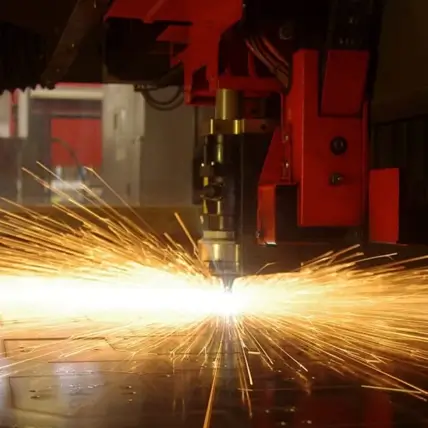
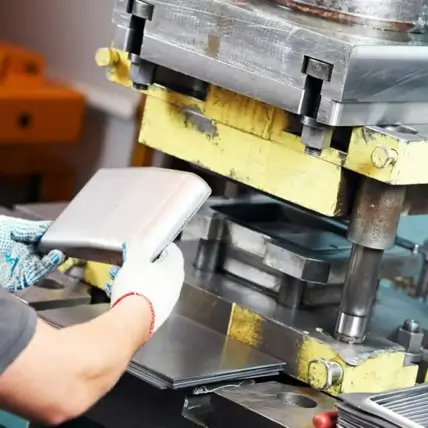
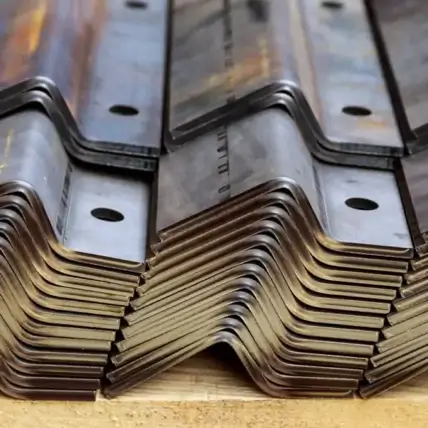
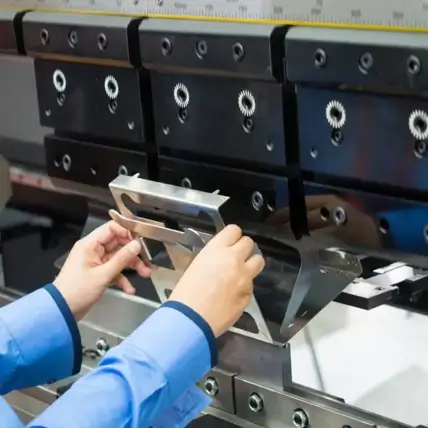
Why Rapid Axis is the best choice for Sheet Metal Fabrication
With large format laser cutters, water jet cutters, press brakes and a vast array of pre-existing tooling assets at our disposal; Rapid Axis is the best choice for any of your Sheet Metal fabrication needs. Whether you want a fully finished housing with powder coating and pad printing or a simple spring steel bracket made, Rapid Axis can support the project with our best in industry customer service and quality. With no minimum order quantities and typically no NRE charges Rapid Axis remains one of the most competitive quality focused Sheet Metal fabricators in North America.
Short lead times
Competitive pricing
Fully finished parts
Technical
General Tolerances: Between ± 0.005” and 0.010”
Build Size: 120″ x 60″
Finishing and 2nd Operations: Alodine, Anodize, Bead Blast, Brushing, Electropolish, Paint, Powder Coat, Part Marking
See Finishes page
Materials: Aluminum, Copper, Galvanized Steel, Mild Steel, Stainless Steel, Steel
See Materials page
What is Sheet Metal Fabrication?
Sheet metal fabrication is a general term that refers to creating parts out of sheet metal. This is different than making parts out of stock metal.
The difference is that sheet metal is a lot thinner than stock bars, rods, and plates. The definition is a little ambiguous, but at Rapid Axis, we consider any metals under 1/4″ sheet metal, and anything over is a standard plate.
Since the material is a lot thinner, the physics at play are a little different. There’s no stock, reliable way to grip a sheet that’s 0.100” thick without bending and deforming it on a CNC mill. In addition, thinner plates can’t be machined the same way as plates — machine speeds need to be turned down, workholding changes such as vacuum chuck, and other operations are possible to use.
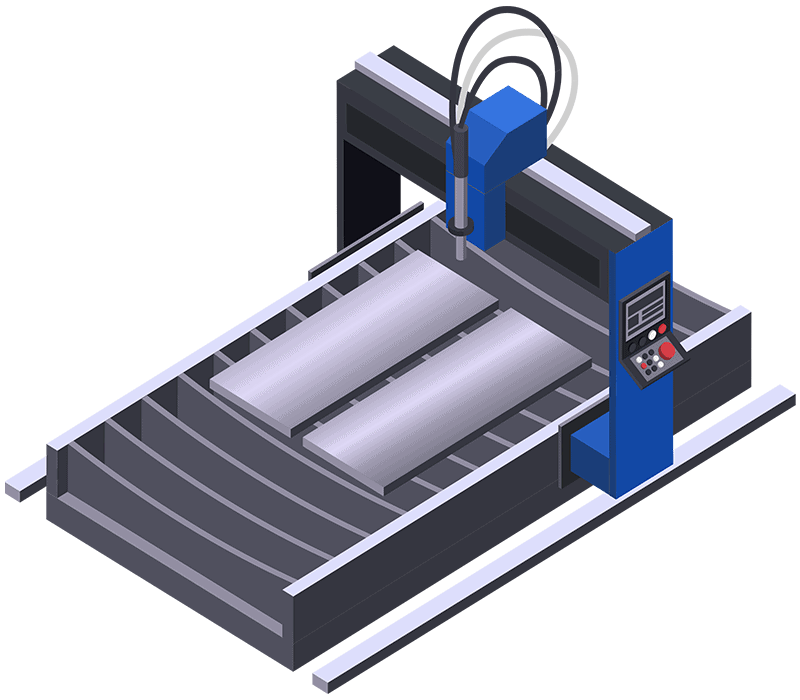
Different Types of Sheet Metal Fabrication
At Rapid Axis, our sheet metal manufacturing services can be separated into three groups. We’ll outline those groups and give quick definitions in this section.
Prototyping
Sheet metal prototyping is the process of creating sheet metal parts to test designs before mass production. Sheet metal fabrication techniques like cutting, bending, and forming are used to create custom parts quickly and accurately.
Sheet metal prototyping is often used to test components for automotive panels, electronic enclosures, and industrial machinery before full-scale manufacturing.
Laser Cutting
A method that’s possible with sheet metal but not plates is laser cutting. In this option, a focused beam of heat will carve through the sheet metal. It requires a separate machine, called a CNC laser cutter.
In general, laser cutting is used for 2D designs that cut through thin sheet metal. This same method can’t be used for thick plates because the laser doesn’t have enough energy to reliably cut through thicker parts.
Production
Sheet metal production focuses on creating uniform, high-volume parts, using sheet metal fabrication techniques like cutting, bending, forming, and assembly.
One of the biggest selling points of using sheet metal fabrication for production parts is how easy it is to cut and form Sheet Metal components. Compared to other materials, you’ll enjoy lower quotes, faster turnaround times, and very quick price breaks on high-quantity orders.
Sheet Metal Applications
A lot of people choose Rapid Axis because we offer some great sheet metal manufacturing. We have a few different machines to choose from, and they all boast unique benefits that can help your operation.
Make One-Part Assemblies
Since sheet metal can be bent into a partially enclosed container, you can realistically make one-part assemblies. To create a four-sided box with plates requires four separate parts and fasteners or welding.
With sheet metal, a break can quickly fold a single piece of sheet metal into a full assembly. This cuts down on manufacturing time and makes it easier to install and service parts in the field.
Quick and Affordable Units
To begin with, sheet metal is a lot more affordable than stock plates. On top of that, each manufacturing step is faster and easier, cutting down on manufacturing time and the total quote price.
Multiple parts can be made from a single purchased sheet of metal. This further cuts down the per-unit price and saves you more money.
Using waterjet or laser cutters to create a flat sheet metal part takes a fraction of the time that a mill would take. We’ve made parts in the past that took seconds to cut after going through the machine setup.
Remember, when a machine shop saves time on manufacturing and money on raw materials, you will see a lower quote.
Lightweight Covers
If you have a part in a dusty, wet, or high-motion area, you will probably need some sort of shroud to protect delicate parts. Through the years, we’ve had a lot of customers request bent covers made out of sheet metal to protect parts of their assembly.
The benefit of using sheet metal for these covers is that they’re incredibly lightweight. In addition, they’re less expensive, easier to make, and easier to install, as we covered earlier.
With a lower weight, you can install a dust shroud on an assembly without changing the center of gravity or requiring additional supports.
In certain industries, covers are required through OSHA safety standards. In these cases, sheet metal offers a very easy and simple solution that doesn’t disturb the process.
If you make the same enclosure out of metal plate, then you might need to add gussets and supports to the existing structure. Metal has a high density, and it’s easy to forget how heavy a piece will be until it’s machined and installed.
To avoid this issue altogether, you can stick with sheet metal fabrication. Our professionals at Rapid Axis can help you understand the different options and create high-quality sheet metal parts for your business.

